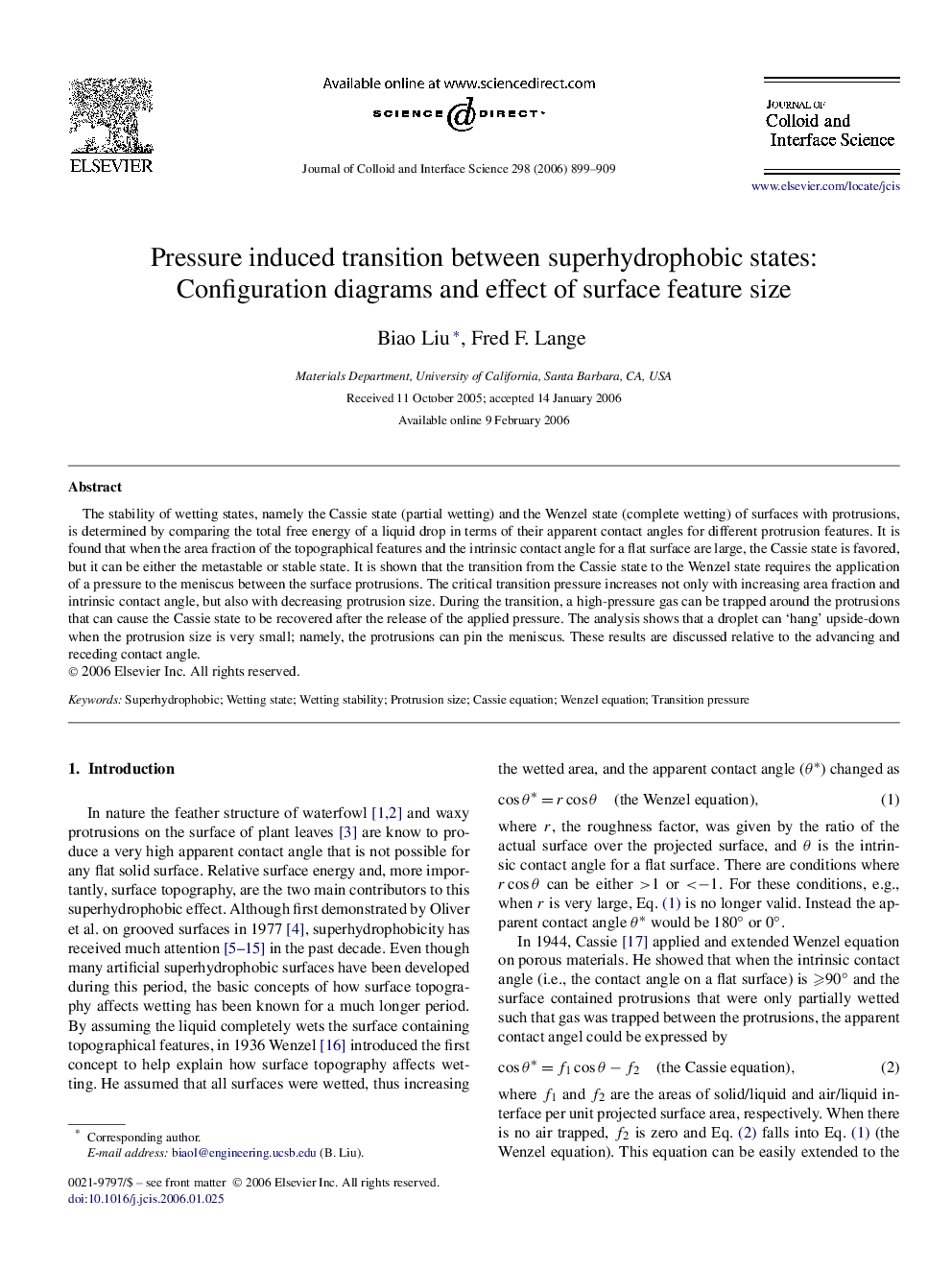| Article ID | Journal | Published Year | Pages | File Type |
|---|---|---|---|---|
| 613710 | Journal of Colloid and Interface Science | 2006 | 11 Pages |
The stability of wetting states, namely the Cassie state (partial wetting) and the Wenzel state (complete wetting) of surfaces with protrusions, is determined by comparing the total free energy of a liquid drop in terms of their apparent contact angles for different protrusion features. It is found that when the area fraction of the topographical features and the intrinsic contact angle for a flat surface are large, the Cassie state is favored, but it can be either the metastable or stable state. It is shown that the transition from the Cassie state to the Wenzel state requires the application of a pressure to the meniscus between the surface protrusions. The critical transition pressure increases not only with increasing area fraction and intrinsic contact angle, but also with decreasing protrusion size. During the transition, a high-pressure gas can be trapped around the protrusions that can cause the Cassie state to be recovered after the release of the applied pressure. The analysis shows that a droplet can ‘hang’ upside-down when the protrusion size is very small; namely, the protrusions can pin the meniscus. These results are discussed relative to the advancing and receding contact angle.
Graphical abstractFigure optionsDownload full-size imageDownload as PowerPoint slide
